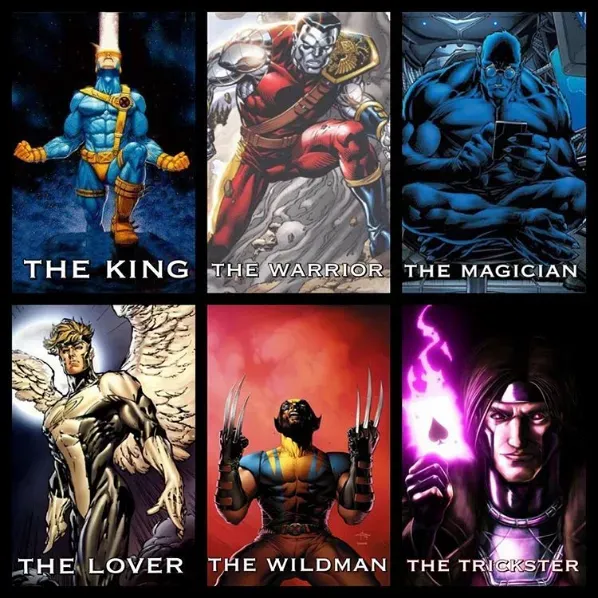The psychodynamics of storytelling - Male archetypes that make a story work

What makes a good impactful story (in copywriting or otherwise)? 🤔
Well, it just so happens that storytelling is a science in itself.
Let me explain.
Turns out there are certain elements in a story that relate to the collective human unconscious (as Carl Jung put it).
This is why ALL (every single one, actually) successful stories faithfully adhere to the “hero’s journey” structure. 😎
Be it a legend, a myth, a Hollywood movie, a children’s tale, or a slimy content marketing endeavor (I should know), they all share the elements of the hero’s journey, character-conflict-resolution, character arcs, and last but not least, character archetypes (something I discovered a few years back with the help of Jung’s work).
I found that the most successful characters, those who better relate to and engage the audiences, are the ones who represent a clear Jungian archetype.
The anima for the idealized mother type, the king for the empowering leader, the warrior for the determined brut, the lover for the hopeful natural, the magician for the skilled-obsessed, the trickster (my favorite) for the mischievous devilishly charismatic. 😈
Looking back in stories from popular culture that portrayed successful teams, I recognized that the most successful teams of characters were those that each member accurately described one distinct Jungian archetype, this way complementing their collective effort with a unique attribute.
One of the most spot-on examples by far is Teenage Mutant Ninja Turtles. 🐢
You get the science geek, Donatello, who is undoubtedly the magician.
You get to passionate, angry and incredibly focused get-things-done tough guy, Raphael, the warrior.
You get the goofy, playful, innocent, idealist and passionate funny-guy of the group, Michelangelo, the lover.
And you get the responsible self-sacrificing leader, Leonardo, the king.
You can see identical patterns in the Avengers, X-Men, Lord of the Rings, Predator, Star Trek TNG, even the Fast and the Furious franchise. Who knew? 🎥 🍿
For example, in X-Men, Cyclops is the male archetype of King, the leader. Then there’s the destroyers of things and relationships, the male archetypes of Warrior, like Colossus, Blob, and Juggernaut. The skilful wiz Beast is the Magician male archetype. The mindless brut Wolverine is the Wildman archetype. Angel, natural and child-like is the Lover archetype. Of course, my favorite, Gambit is the Trickster archetype. And lastly, Professor-X is the Peacemaker archetype, the one that resolves conflict and brings them all together.
Yet all these extreme manifestations of the male psyche are just fragments of a single male mind. All men have a bit of all the archetypes in them, and the self-actualized man is he who has them all balanced.
Archetypes work in a story because they are they make the hero’s journey all the more meaningful, relatable, and satisfying. The archetype responds to the story’s catalyst, it is what allows the showdown with the antagonist to occur and we won, and it is what gives the final realization.
And then you get poor attempts at defining the characters of a team in a story, like Ocean’s 12, Guardians of the Galaxy, or Prometheus, and you’re left wondering which role each character actually played in the whole story.
Characters who don’t have a clear archetype or teams of characters with more than one of each archetype are boring, unrelatable, and unimpactful.
That’s just bad writing. 🧐
There is no point in storytelling if it will be duller than reality.
Why?
Because, apparently, this is the way our brains are wired to process, assess and respond to storytelling. 🤯
What’s your favorite character or team of characters from a story?
What’s their archetype?
What’s yours? 😎